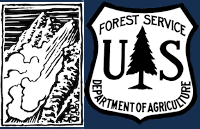GNFAC Avalanche Forecast for Thu Feb 13, 2025
<p><span><span><span><strong><span><span>Wind slab avalanches</span></span></strong></span></span></span><span><span><span><span><span><span> are the primary avalanche problem. Old ones from about three days ago have likely stabilized but new ones formed overnight and should be easy to identify today. Winds have mostly been blowing from the west and will blow from the south today. Look for freshly wind loaded areas and avoid them.</span></span></span></span></span></span></p>
<p><span><span><span><span><span><span>Dave spotted a fresh naturally triggered wind slab yesterday in the northern Bridgers and discusses this issue</span></span></span></span></span></span><a href="https://youtu.be/2svWLeG9wLU?feature=shared"><span><span><span><span><s…; in this video</span></span></u></span></span></span></span></span></a><span><span><span><span><span><span>. Some weakening or faceting occurred on the snow surface the last few days, and fresh wind slabs could be resting on that weak snow making them especially touchy.</span></span></span></span></span></span></p>
<p><span><span><span><span><span><span>Today the avalanche danger is MODERATE on wind loaded slopes and LOW on non-wind loaded slopes. HEADS UP - the size, depth, distribution and sensitivity of wind slabs will be increasing today.</span></span></span></span></span></span></p>
<p><span><span><span><strong><span><span>Wind slab avalanches</span></span></strong></span></span></span><span><span><span><span><span><span> are the primary problem resulting from increased winds from the west yesterday and this morning. Today winds will increase a bit more and shift to the south. The size, distribution, and sensitivity of these wind slabs will increase throughout the day. Identify areas with fresh drifting and avoid them.</span></span></span></span></span></span></p>
<p><span><span><span><strong><span><span>Persistent slab avalanches</span></span></strong></span></span></span><span><span><span><span><span><span> remain on our radar because there is a widespread layer of weak, faceted snow that formed in late January. This layer is buried 1-3 feet deep and seems to have been unreactive in recent days (</span></span></span></span></span></span><a href="https://www.mtavalanche.com/node/34085"><span><span><span><span><span><… ob</span></span></u></span></span></span></span></span></a><span><span><span><span><span><span>). Wind loading and snowfall this weekend will make this layer more of a concern. </span></span></span></span></span></span></p>
<p><span><span><span><span><span><span>Near Cooke City, there appears to be a weakness 1-2 ft deep near a layer of dust that was deposited on the snowpack just over a week ago. This dust layer is easy to see in a snowpit wall, and it only takes a few minutes to perform an extended column test on this layer.</span></span></span></span></span></span></p>
<p><span><span><span><span><span><span>Today the avalanche danger is MODERATE. Heightened avalanche conditions exist with fresh wind slabs and buried weak layers. HEADS UP - every danger rating covers a range of conditions, and I expect the danger to be creeping up today</span></span></span></span></span></span></p>
Upcoming Avalanche Education and Events
Our education calendar is full of awareness lectures and field courses. Check it out: Events and Education Calendar
Cooke City ob
Dug a pit and did an ECT near the NE entrance to Yellowstone. I dug at 9500ft, W aspect, on a 29 degree slope. HS 275cm. I got an ECTP12 55cm down, right above the obvious layer of dirt. Moderate winds from the west.
Sheep Creek
Moderate winds today north of Cooke City. Stronger winds than forecasted and lots of snow is being transported. Couple hand pits showed planar breaks on a crust on SW aspect around 9600 ft.
Lower Hyalite
Explored slopes in lower Hyalite Canyon between 6000-7000 ft in elevation. Really close to being skiable and good. Otherwise, we found snow depths ranging from 6 inches to 2 feet. Generally very weak and faceted with thick crusts on slopes with a southerly tilt. All this weak snow probably won't be an issue because this area only gets the scraps from storms and never has enough loading to make an avalanche problem.
Weather and Avalanche Log for Thu Feb 13, 2025
7 to 13 degrees warmer but temps still below 0F
Cold temps and sunny days starting to create some surface hoar forming seen on the primary ridge of big Ellis. Surface hoar was less widely distributed on the primary ski zone but was present all along the top of the ridge. Photo: K Gordon
Forecast link: GNFAC Avalanche Forecast for Thu Feb 13, 2025
Surface Hoar on Big Ellis Ridge
Cold temps and sunny days starting to create some surface hoar forming seen on the primary ridge of big Ellis. Surface hoar was less widely distributed on the primary ski zone but was present all along the top of the ridge.
GNFAC Avalanche Forecast for Wed Feb 12, 2025
<p><span><span><span><strong><span><span>Cold is probably the biggest threat today</span></span></strong></span></span></span><span><span><span><span><span><span> making any injury life-threatening if you can’t get back to the trailhead quickly. Be careful. </span></span></span></span></span></span></p>
<p><span><span><span><span><span><span>In terms of avalanches, it’s not too dangerous but there are a few things to look out for in specific places:</span></span></span></span></span></span></p>
<p><span><span><span><strong><span><span>Wind slab avalanches:</span></span></strong></span></span></span><span><span><span><span><span><span> When are these not a concern? Downhill winds in the Bridgers yesterday and possibly today may have moved some snow and formed fresh wind slabs that will be the most sensitive. In all other areas, it’s been about 48 hours since winds were moving snow and wind slabs are less likely to be triggered. </span></span></span></span></span></span></p>
<p><span><span><span><strong><span><span>Persistent slab avalanches:</span></span></strong></span></span></span><span><span><span><span><span><span> These types of slides have become almost unlikely. The snow surface weakened in late January and was buried about 12 days ago with about 1-3 feet of snow on top now. Places to especially look for and assess this layer are the southern Madison Range, southern Gallatin Range, and the </span></span></span></span></span></span><a href="https://www.mtavalanche.com/snow-observations-list"><span><span><span><… area</span></span></u></span></span></span></span></span></a><span><span><span><span><span><span>. Also, look for this layer OR any weak facets in out-of-the way places that don’t have enough snow to ride in most winters but do have enough now. Read </span></span></span></span></span></span><a href="https://www.mtavalanche.com/node/34109"><span><span><span><span><span><…’s ob</span></span></u></span></span></span></span></span></a><span><span><span><span><span><span> on this topic and </span></span></span></span></span></span><a href="https://www.mtavalanche.com/node/34118"><span><span><span><span><span><… example from the northern Gallatin Range</span></span></u></span></span></span></span></span></a><span><span><span><span><span><span> at 6400’ in elevation.</span></span></span></span></span></span></p>
<p><span><span><span><span><span><span>Today the avalanche danger is MODERATE. </span></span></span></span></span></span></p>
Upcoming Avalanche Education and Events
Our education calendar is full of awareness lectures and field courses. Check it out: Events and Education Calendar
